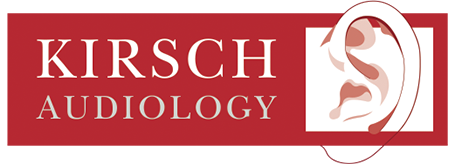Tips for Managing Hearing Aids During Spring Sports
When the weather warms up and you’re ready to get back outside, your
An interview with Lyn Kirsch, Au.D.: In honor of Black History Month, CAA celebrates diversity of the audiology community in California.
Read More →

By: admin | April 1, 2024
Hearing tests are a crucial part of understanding your hearing health. Having a new test performed can be a different experience, but don’t worry, hearing evaluations are simple procedures designed to assess the health of your auditory system.
Think of a hearing test like any other health check-up. Trained professionals carry out an evaluation to determine the status and performance of your ears. But it’s not like a routine doctor’s visit or eye exam, it delves deeper into the intricate world of sound perception and how well you can hear different frequencies. After all, being informed is empowering – and understanding what happens during a hearing test can help you take charge of your own hearing health.
A hearing test can provide invaluable insights into your auditory health, helping you understand if you have hearing loss, its underlying causes and the type of hearing impairment you may be experiencing. However, many individuals are unaware of when they should seek a hearing evaluation, leading to delayed diagnosis and treatment. To help identify potential hearing issues, here are five common signs that indicate the need for a hearing test:
Regular hearing tests are recommended for individuals of all ages who may be experiencing signs or symptoms of hearing loss or other auditory concerns. This includes older adults, who are at higher risk of age-related hearing loss, as well as individuals regularly exposed to loud noise in their occupational or recreational activities. Children and adolescents should also undergo regular screenings to monitor auditory development and detect any potential hearing issues early in life.
Additionally, individuals with chronic health conditions, a family history of hearing loss or experiencing signs of hearing impairment, like difficulty understanding speech or ringing in the ears, should prioritize comprehensive hearing evaluations. By seeking regular assessments from a qualified audiologist or hearing health professional, individuals can take proactive steps to preserve their hearing health, address any potential hearing issues promptly and improve overall quality of life.
Regular hearing tests are not just for those who already have hearing issues. They are also key for early detection of any potential problems. Just like you would get regular check-ups for your eyes or teeth, your ears also need consistent care and attention. By catching any changes in your hearing early on, you can start managing them sooner rather than later.
Evaluations can help monitor the effectiveness of any current treatments or devices you may be using, like hearing aids. It’s all part of a comprehensive approach to looking after your overall health and wellbeing.
After understanding the importance of regular hearing tests, the next step is your initial meeting with a hearing health professional. This encounter is more than just an appointment; it’s the start of your proactive approach to maintaining good hearing health.
In this meeting, you’ll have the opportunity to discuss any concerns or questions you may have about your hearing. The professional will guide you through the process, explaining everything in simple terms and ensuring that you’re comfortable. They are there to help and support you in managing your hearing health effectively.
Your medical history will play a big role in your hearing tests. Past illnesses, medications or injuries can influence your hearing abilities. It’s important to share this information with your audiologist to ensure accurate results.
Let’s shift our focus to the different types of hearing tests available. Each test serves a unique purpose and provides specific insights into your hearing health. From pure-tone tests that evaluate your ability to hear distinct frequencies, to speech tests that assess how well you can understand words at different volumes, there’s a variety of methods used by audiologists. Familiarizing yourself with these tests can help you feel more at ease during your appointment and ensure you get the most out of your visit to the hearing clinic.
This test is key in evaluating the sensitivity of your hearing across various frequencies. It’s like a fine-tuned check-up for your ears, helping to pinpoint any specific areas where your hearing might be less than optimal.
Pure-tone audiometry works by playing a series of tones at different pitches and volumes into your ears, one at a time. You’ll signal when you can hear the sound, and this information helps create an audiogram – a visual representation of your hearing ability across different frequencies. The importance of this test lies in its ability to identify not just if you have a hearing loss, but also the extent and nature of it. It can help determine whether you have sensorineural or conductive hearing loss. It provides valuable information about the degree of your hearing loss.
This test is straightforward yet powerful in its capacity to provide detailed insights into your hearing health. So, when you step into that hearing clinic for a test, keep in mind that each beep you hear plays an integral part in understanding and managing your overall hearing health better.
We now focus on another essential component of a hearing test – speech audiometry. This test evaluates your ability to recognize and understand speech, which is a critical aspect of our daily communication.
Speech Audiometry involves listening to and repeating words or sentences at different volumes. This process helps the audiologist assess two key aspects: your speech recognition threshold (SRT) and word recognition score (WRS). The SRT is the faintest speech that you can understand 50% of the time, while the WRS indicates how well you can distinguish and comprehend words correctly at a comfortable volume. By evaluating these elements, professionals gain insights into your hearing health that go beyond just hearing sounds – they learn about your ability to engage in meaningful conversations too.
This test can sometimes highlight hearing issues that other tests might miss. It’s particularly useful for identifying whether a hearing problem is due to issues in the middle or inner ear.
If you’re facing difficulty in understanding speech or detecting softer sounds, even after using hearing aids, a bone conduction test could be the solution. This test bypasses the outer and middle ear, directly stimulating the inner ear and thus helps pinpoint where exactly your hearing problem lies. By addressing these hidden concerns, you can work with your audiologist to find more effective solutions for your hearing health.
We now focus on another crucial part of a comprehensive hearing assessment – Tympanometry. This test provides valuable insights into the health of your middle ear, helping to detect any potential issues that might be affecting your hearing. By using a device that changes the air pressure in your ear and measures how your eardrum responds, audiologists can assess how well your middle ear is functioning. This information is vital for diagnosing problems like ear infections or blockages accurately. So keep in mind, each part of the hearing test plays an essential role in maintaining your overall hearing health.
After undergoing a series of hearing tests, you’ll receive an audiogram – a visual representation of your hearing abilities. It might look like a complex graph at first glance, but don’t worry! Making sense of your audiogram results is simpler than it seems.
The audiogram plots the softest sounds you can hear at different pitches or frequencies. The horizontal axis represents frequencies, typically ranging from low (on the left) to high (on the right). The vertical axis represents loudness, with softer sounds at the top and louder sounds towards the bottom. Your audiologist will mark your responses to different sounds on this graph, creating a unique ‘map’ of your hearing.
Interpreting this ‘map’ can provide valuable insights into your hearing health. For instance, if you have difficulty hearing high-pitched sounds even at loud volumes, these would be plotted towards the bottom-right corner of your audiogram. This could indicate sensorineural hearing loss often associated with aging or exposure to loud noises.
It’s also important to discuss these results with your audiologist. They can provide personalized advice based on these findings and suggest appropriate solutions like hearing aids or therapies if needed. So understanding your audiogram is not just about decoding a graph; it’s about learning more about your hearing health and finding ways to manage it effectively.
Have you ever wondered what happens after your hearing test? What’s the next step in this process? After your hearing test, it’s time to discuss the results with your audiologist. They will explain the findings of your audiogram and how it relates to any difficulties you may be experiencing. This conversation is a crucial part of understanding your hearing health and planning the way forward.
Hearing aids come in various styles, including behind-the-ear (BTE), in-the-ear (ITE), receiver-in-canal (RIC) and completely-in-canal (CIC), each offering unique advantages in terms of comfort, discretion and functionality. Your audiologist will work closely with you to choose the most appropriate hearing aid style and technology level to meet your individual needs and preferences.
With consistent use, hearing aids can significantly enhance your ability to hear and communicate effectively in various listening environments, from quiet conversations at home to noisy social gatherings and public spaces. By amplifying speech and reducing background noise, hearing aids can improve speech clarity, enhance auditory comprehension and facilitate more effortless communication with friends, family and colleagues.
Tags: audiogram, faqs, tympanometry

When the weather warms up and you’re ready to get back outside, your
By: admin | June 20, 2025

Small study finds 65 percent of patients taking teprotumumab report
By: admin | May 23, 2025

By Douglas L. Beck, AuD; Keith N. Darrow, PhD; Bopanna Ballachanda, PhD;
By: admin | March 6, 2025
